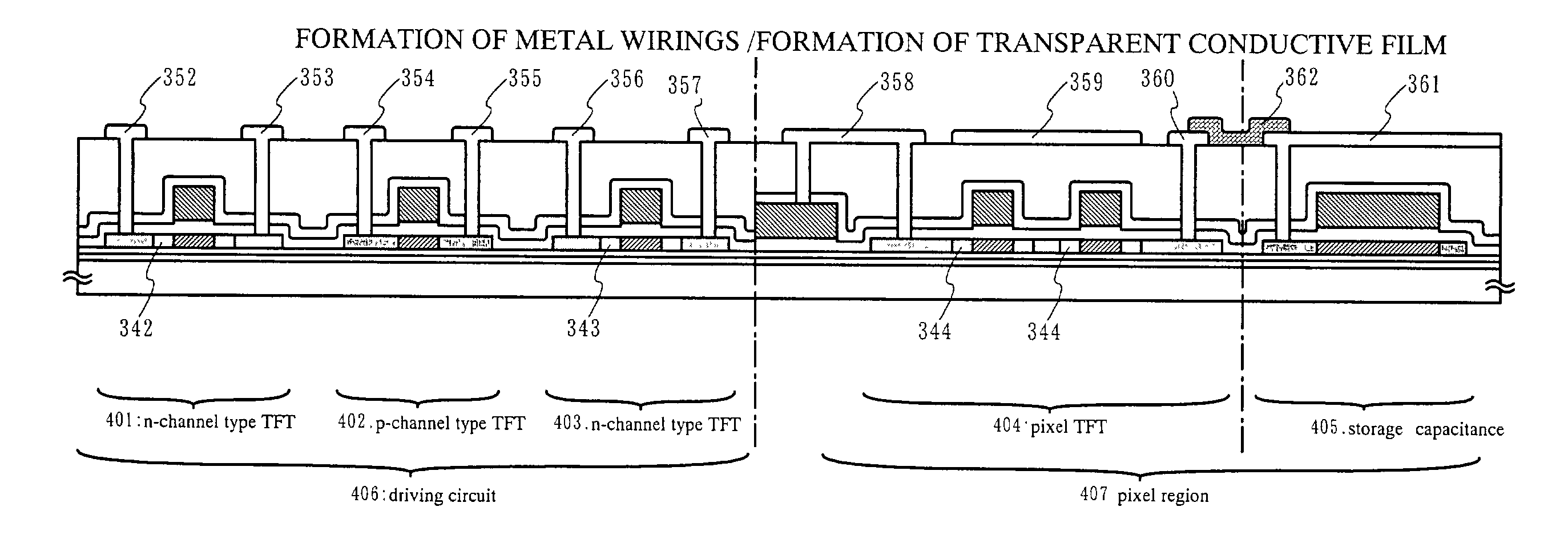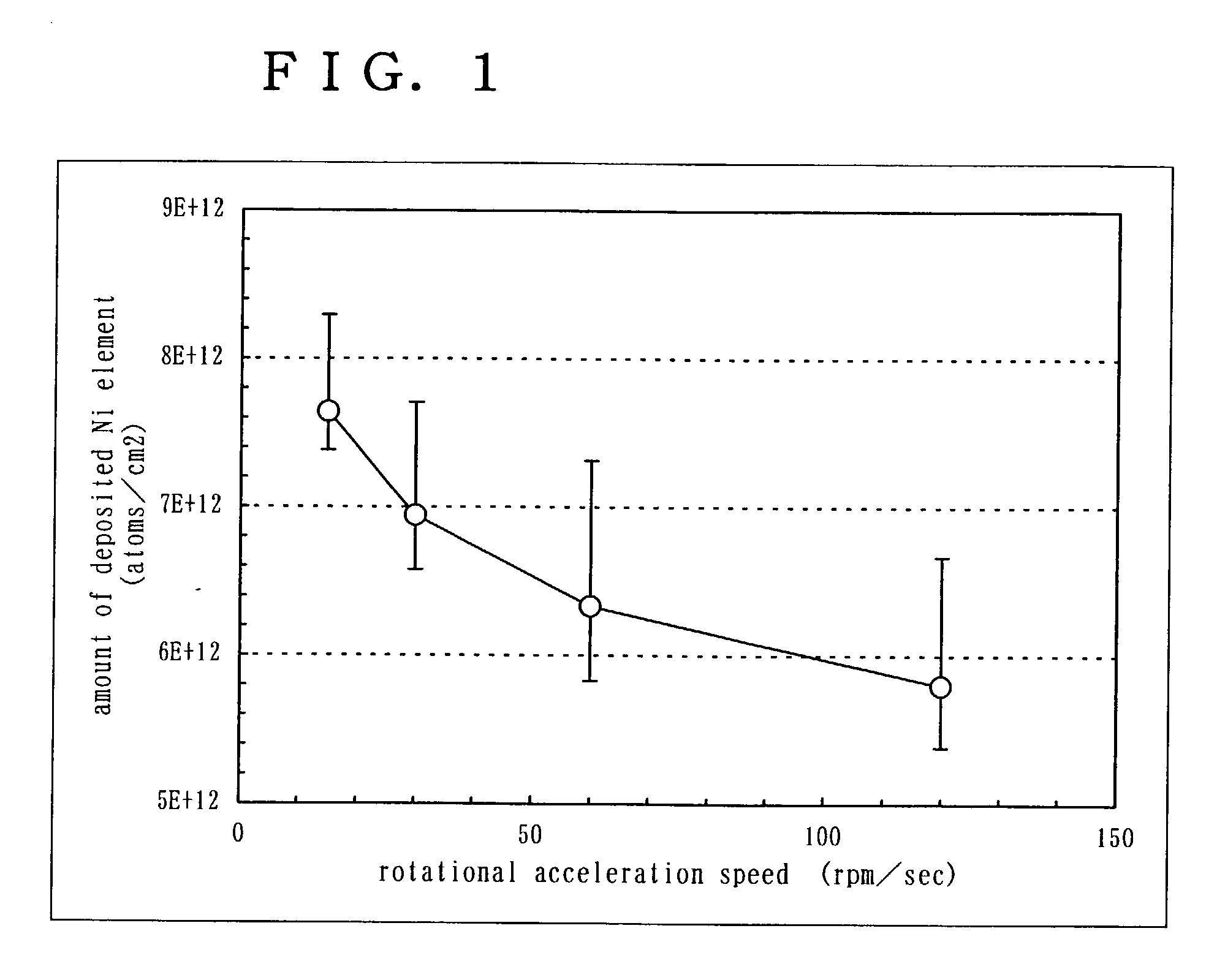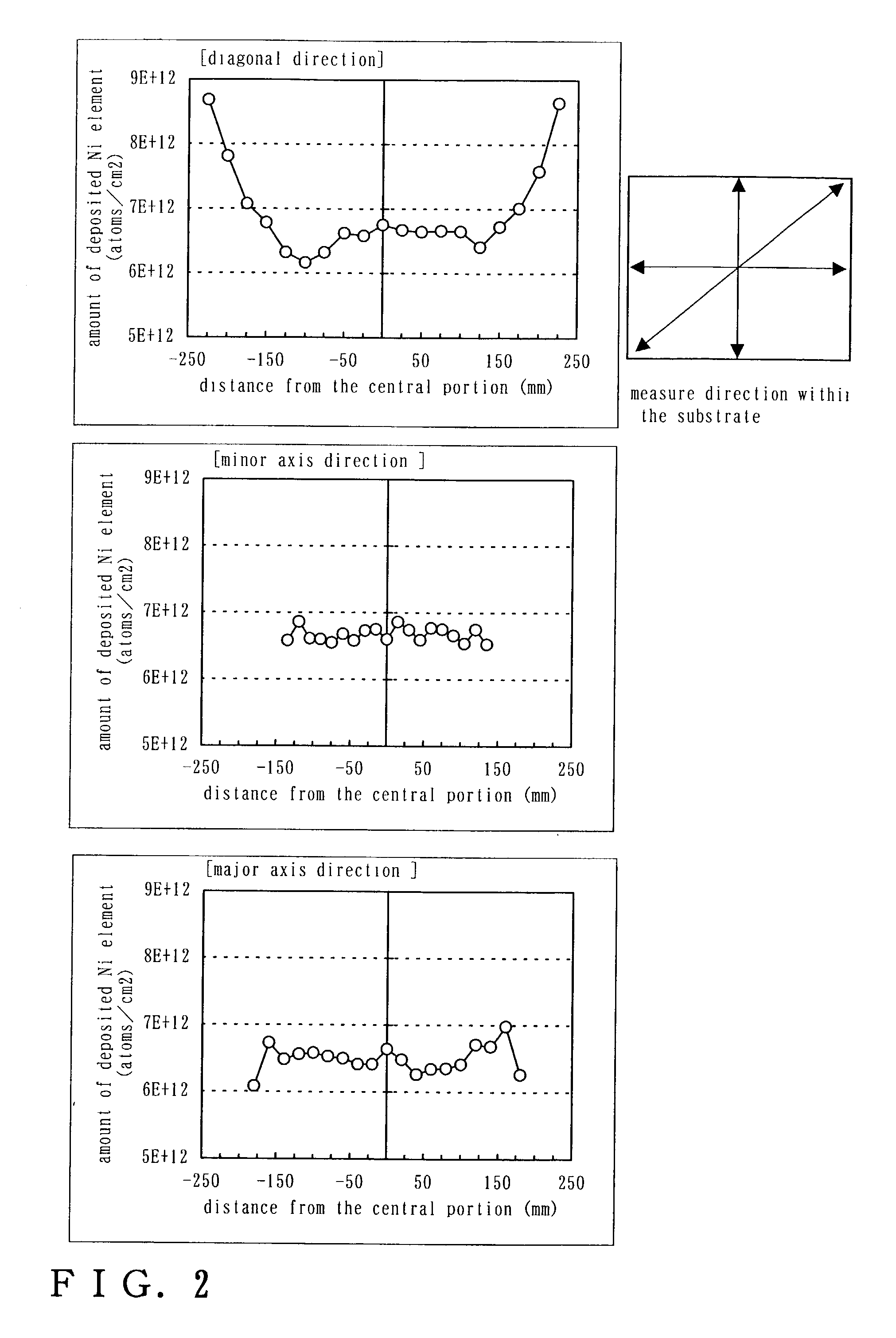Crystalline semiconductor film, method of manufacturing the same, and semiconductor device
a technology of crystalline silicon and semiconductor film, which is applied in the direction of crystal growth process, chemistry apparatus and processes, transistors, etc., can solve the problems of poor unsuitability of amorphous silicon films to active layers, and non-uniformity, etc., to achieve the effect of improving the uniformity of reducing the amount of added catalyst elements
- Summary
- Abstract
- Description
- Claims
- Application Information
AI Technical Summary
Problems solved by technology
Method used
Image
Examples
embodiment 1
[0086] Embodiment 1
[0087] A case of applying the spin addition method of the present invention to a catalyst element addition process in a method of manufacturing a crystalline silicon film by a vertical growth method is discussed in detail in embodiment 1 based on FIGS. 5A to 5F. Note that FIGS. 5A to 5F are substrate cross sectional diagrams showing a process of manufacturing a crystalline silicon film by a longitudinal growth method.
[0088] First, an amorphous silicon film 102 is deposited at a film thickness of 10 to 150 nm on a glass substrate 201 by reduced pressure CVD or plasma CVD. In embodiment 1, a 100 nm thick film is deposited by plasma CVD for the amorphous silicon film 102. An extremely thin natural oxide film 103 (not shown) is formed on the surface of the amorphous silicon film 102 during film deposition due to the influence of oxygen within the air that is mixed into the processing atmosphere. (FIG. 5A)
[0089] Next, the substrate is cleaned for a predetermined amount...
embodiment 2
[0096] Embodiment 2
[0097] The aqueous Ni element solution, the catalyst element solution having an effect of promoting crystallization for amorphous silicon films, is applied to the entire surface of the glass substrate 101 in FIG. 5A by a spin addition method in embodiment 1. Spin addition is performed similarly to that of embodiment 1. An amorphous silicon film is then deposited, and a crystalline silicon film can be obtained by a vertical growth method by similarly performing heat treatment.
[0098] Further, a silicon nitride film, a silicon oxynitride film or the like manufactured by plasma CVD or sputtering may also be formed to have a thickness of 10 to 200 nm as a base film on the substrate 101.
embodiment 3
[0099] Embodiment 3
[0100] A case of applying the spin addition method of the present invention to a catalyst element addition process in a method of manufacturing a crystalline silicon film by a horizontal growth method is discussed in detail in embodiment 3 based on FIGS. 6A to 6E. Note that FIGS. 6A to 6E are substrate cross sectional diagrams showing a process of manufacturing a crystalline silicon film by a horizontal growth method.
[0101] First, an amorphous silicon film 202 is deposited at a film thickness of 10 to 150 nm on a glass substrate 201 by reduced pressure CVD or plasma CVD. In embodiment 3, a 100 nm thick film is deposited by plasma CVD for the amorphous silicon film 202. An extremely thin natural oxide film (not shown) is formed on the surface of the amorphous silicon film 202 during film deposition due to the influence of oxygen within the air that is mixed into the processing atmosphere.
[0102] Next, a mask insulating film 203 made from a silicon oxide film having ...
PUM
| Property | Measurement | Unit |
|---|---|---|
| length | aaaaa | aaaaa |
| domain size | aaaaa | aaaaa |
| heat resistant temperature | aaaaa | aaaaa |
Abstract
Description
Claims
Application Information
 Login to View More
Login to View More - R&D
- Intellectual Property
- Life Sciences
- Materials
- Tech Scout
- Unparalleled Data Quality
- Higher Quality Content
- 60% Fewer Hallucinations
Browse by: Latest US Patents, China's latest patents, Technical Efficacy Thesaurus, Application Domain, Technology Topic, Popular Technical Reports.
© 2025 PatSnap. All rights reserved.Legal|Privacy policy|Modern Slavery Act Transparency Statement|Sitemap|About US| Contact US: help@patsnap.com



